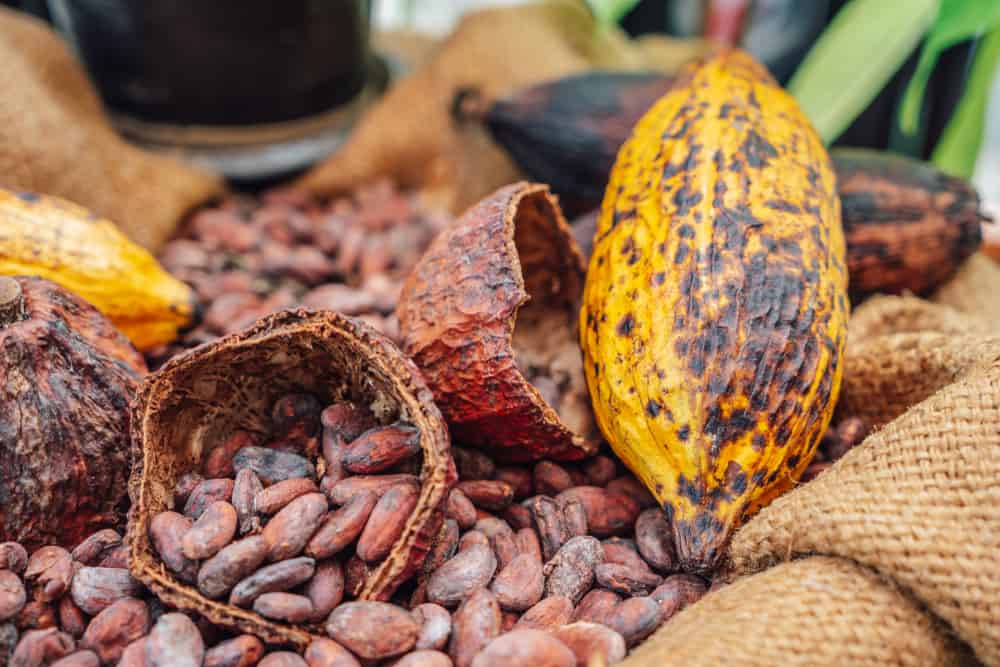
Food supply chains vary in complexity based on the type of produce, its sourcing, and the level of processing it undergoes. Though the phrase “farm-to-fork” sums up the journey of food through its supply chain, it does nothing to shed light on the number of steps or the different stakeholders involved in making that happen.
As a general rule of thumb, the more complex and international food supply chain is, the more opaque it gets while trying to trace the quality and the conditions under which the produce was sourced. Apart from benefiting the end consumer, advocating for supply chain visibility might surprisingly help alleviate the working conditions of people toiling away on distant farms.
In the context of pushing for supply chain visibility, the multi-billion dollar chocolate industry would be a good place to start. The primary ingredient of chocolate is cocoa, a plant that grows well in hot and humid regions with high precipitation – making West Africa an epicenter for cocoa plantations. The countries of Cameroon, Ghana, Ivory Coast and Nigeria account for 70 percent of the world’s cocoa production, selling their cocoa beans to the large chocolate manufacturers including Hershey, Nestle and Mars.
The absence of regulations and worker unions, as well as widespread poverty, have pushed these countries to exploit the workforce in cocoa plantations, which include child labor, forced labor and corporate slavery. Though most of the large corporations do understand the rampant human rights’ violations occurring, they rarely acknowledge the issue or are indifferent to the workers’ plight.
In many ways, cocoa production keeps the West African countries afloat. For instance, 60 percent of Ivory Coast’s export revenue comes solely from its cocoa plantations. As the market for chocolate grows in the West, chocolate manufacturers are forced to reduce prices to stay ahead of market competitors, which increases the demand for cheap cocoa. In the end, it is the farmers who are left in the lurch, with figures showing that an average cocoa farmer makes less than $2 per day.
Amid issues such as wage disconnect, forced labor and corporate apathy, putting the chocolate supply chain on a blockchain ledger can help make the supply chain more transparent. These are problems that exist under the surface and getting it the attention of end consumers would ultimately help drive better working conditions and pay for the workers.
Amsterdam-based chocolate company Tony’s Chocolonely, is taking the initiative of bringing visibility and transparency to chocolate supply chains via a shared value chain platform called the Beantracker, that digitally records the end-to-end movement of cocoa beans from the field to manufacturing to the final wrapping as a chocolate bar at the chocolate factory. The idea is to create a traceable channel for every stakeholder in the supply chain to understand what goes into a chocolate bar, and essentially put inhumane working conditions in the spotlight.
Though the Beantracker is not powered by blockchain, this is a start. The promise of blockchain is not entirely different from the Beantracker, but blockchain’s underlying technology is easier to scale up, especially if the system runs on a universal framework made of open standards.
The Blockchain in Transport Alliance (BiTA) is a consortium that has made this a reality, bringing together hundreds of stakeholders in the supply chain space to create open standards that companies can use as a platform for their blockchain needs. Companies’ blockchain pilots, if successful, can be scaled up across its specific vertical – which in this case is the chocolate supply chain.
That said, blockchain cannot be the stand-alone technology that pushes traceability into a supply chain as complex as the chocolate industry. Since food supply chains need to track real physical goods, it is vital for stakeholders to add Industrial Internet of Things (IIoT) to cocoa bean shipments to record where they are sourced from. Finally, for blockchain to work seamlessly, it will require stakeholders to come together, train and educate their personnel on data-sharing from the start, as real-time data inflow is critical to the system’s functioning.










